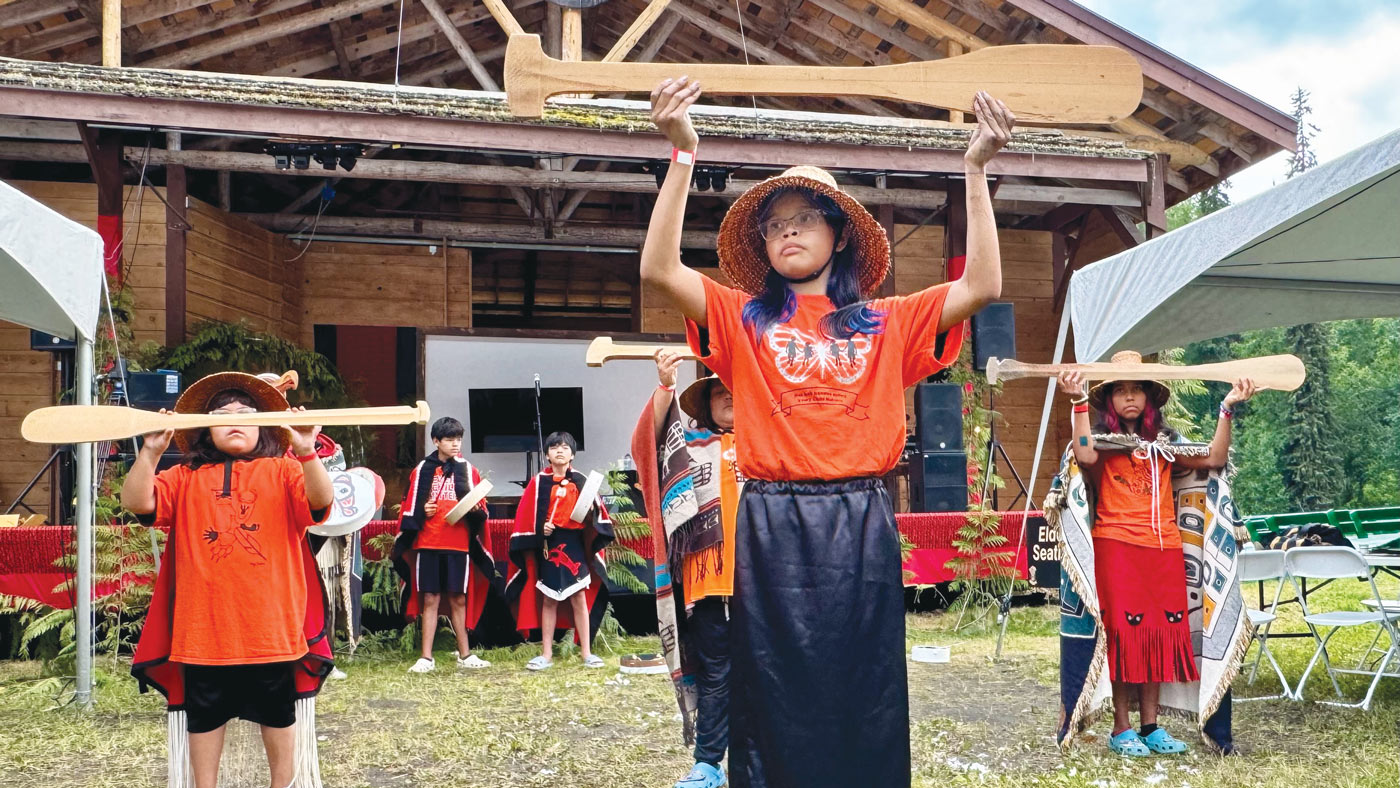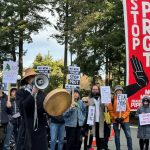Participating in the fourth Peace and Unity Summit, held on the rodeo grounds at Anspayaxw (the Hiding Place) in Kispiox, BC in August, was entering another world.
This year’s summit was dedicated to “supporting Indigenous land defenders who continue to uphold Indigenous law in the face of police violence and relentless pressure from the extraction industry.”
The four-day event was led by Wet’suwet’en and Gitxsan people, with support from many groups, notably the Skeena Watershed Conservation Coalition, David Suzuki Foundation, and Dogwood.
These four days were a combination of serious discussions, land retreat, networking, youth mentoring, cultural sharing, meals, and celebration, all of which were informed by the laws and generosity of Gitxsan and Wet’suwet’en cultures.
Panel discussions from Indigenous leaders were held on topics like “Land Back and Sovereignty: Decolonizing in Action,” “Free, Prior, and Informed Consent and Resource Extraction,” and “Allied Support and Digital Storytelling.”
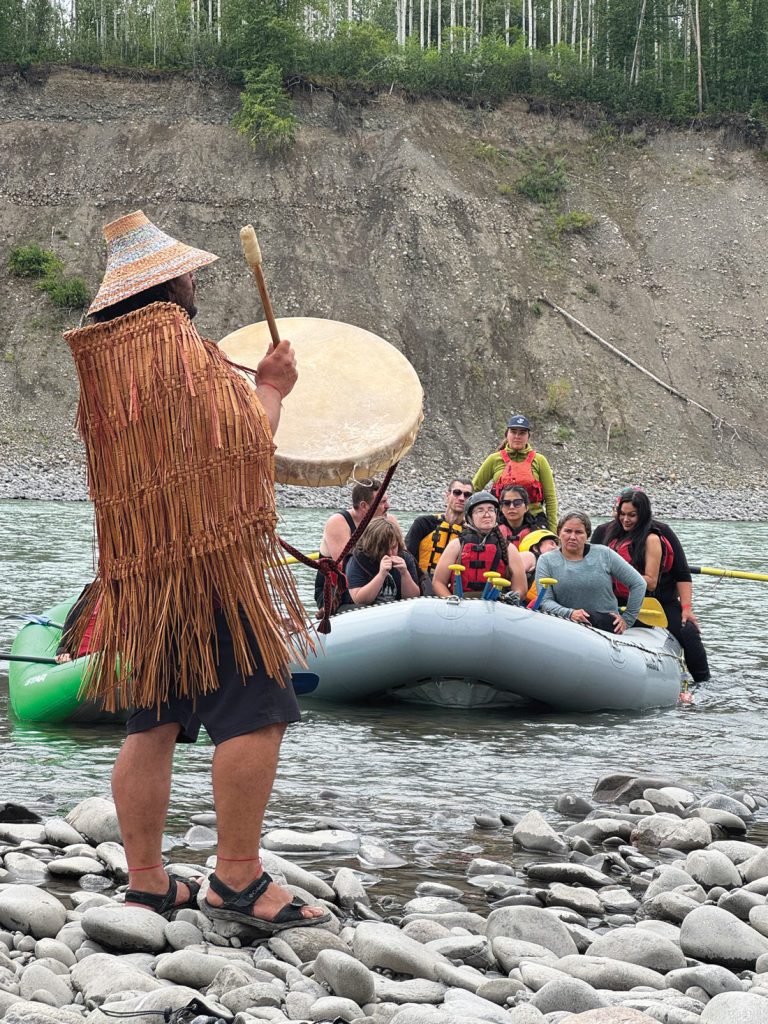
Learning by doing
Panel days were interspersed with land-based days of learning through rafting and other activities on beautiful Gitxsan territory. Activities on the site included a kids’ camp, youth media mentorships, a sweat lodge, arts demonstrations, and even horse-drawn wagon rides. We were treated to generous and delicious food (fresh sockeye salmon and crab!) and evenings filled with spirited Gitxsan, Nisga’a and Sekani drumming and dancing, and the Big River Cree Singers from Saskatchewan, who got everyone up and moving.
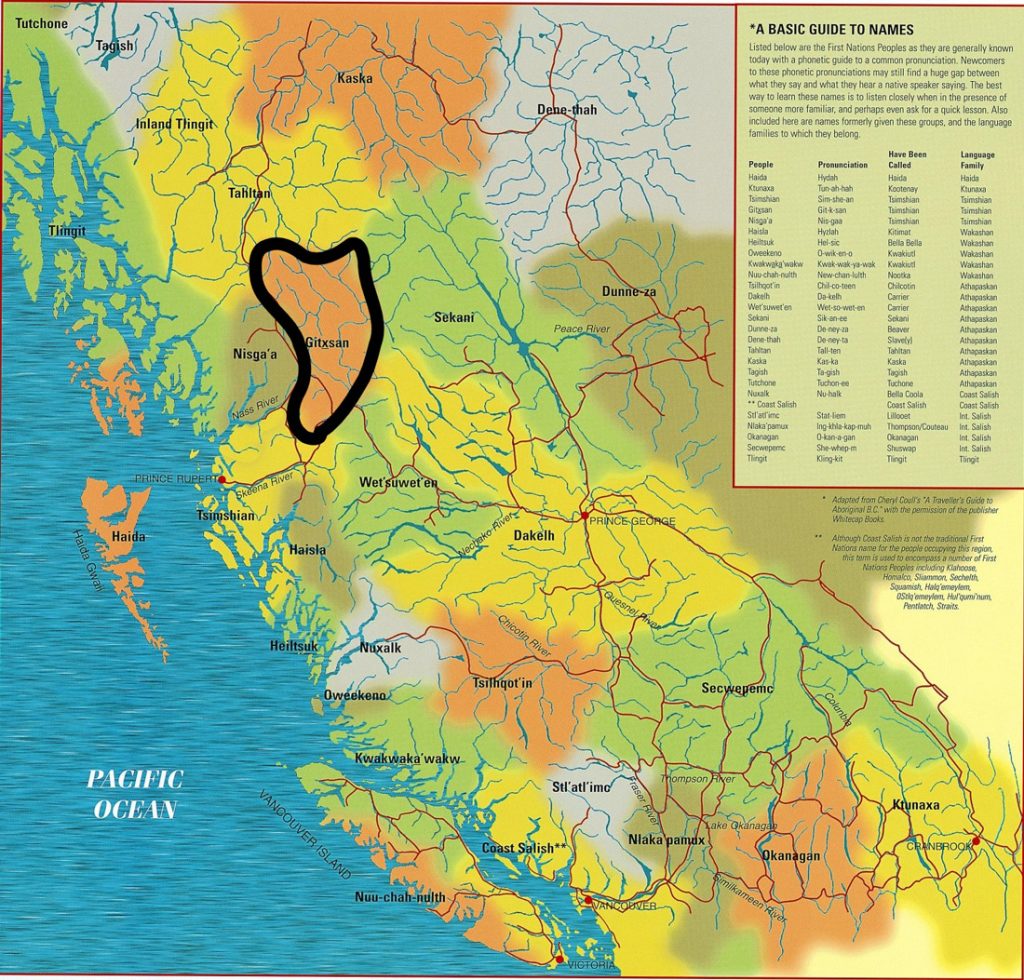
Running through the entire four days was a powerful spoken and unspoken message on alternative economics: There is another way, and it must come from caring for and respecting the land and each other. This caring adheres to sacred laws. It includes well-defined decision-making processes, within houses and clans and among chiefs, which would be the proper way to affirm “free, prior and informed consent.” This is something clearly missing in almost all of Canada’s actions at this time. The responsibility of the houses is to look after the land, all of which implies an entirely different way of being.
“Peace and Unity is meant for you.
It doesn’t matter who you are.
You don’t have to be Indigenous to share these values.
We don’t want you behind us, We want you right beside us.”
– Gwii Lok’im Gibuu, of Wilp Spookxw
Cleo Reece from Keepers of the Water pointed out that the promise in Treaty 8 to “share the land” went only to the depth of a plough. She also said that “revenue-sharing” means doing the same things as the oil companies, and that current revenue-sharing and “economic reconciliation” by fossil fuel corporations is about extraction and depletion, not about sharing. She warned that the environmental degradation experienced by Alberta’s First Nation communities impacted by fossil fuels will happen in Gitxsan territory as well, if people don’t come together to fight.
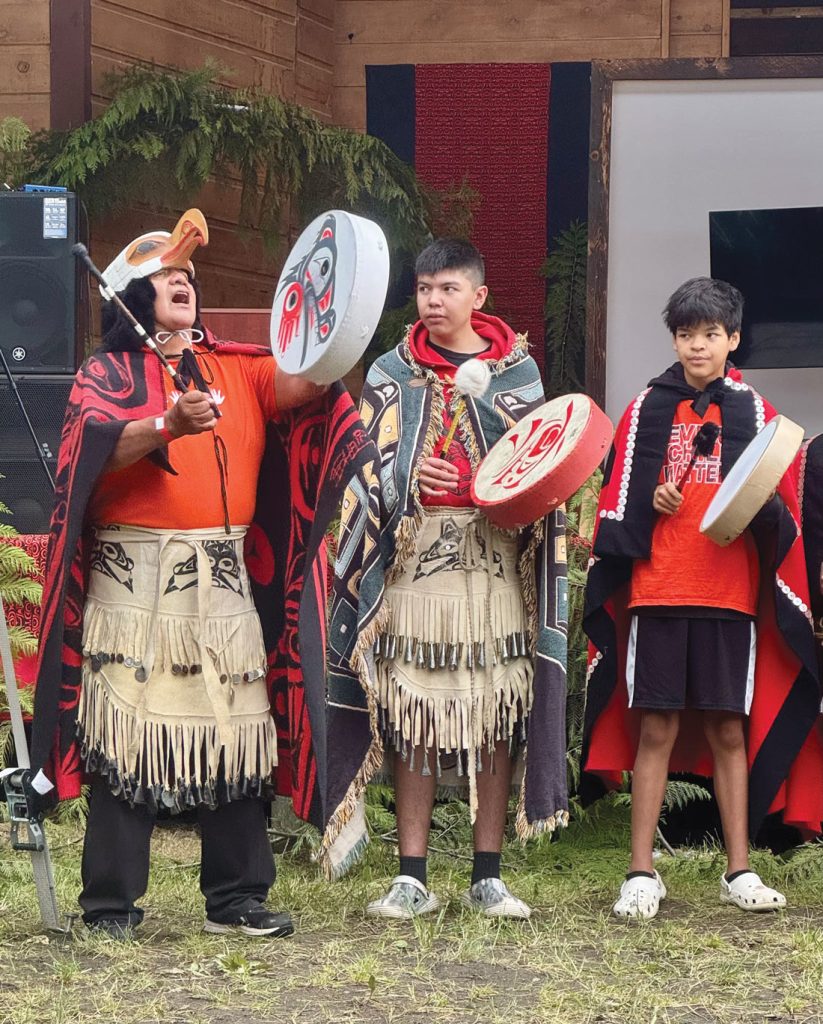
Rights and relationships
On the final day, participants were invited to witness the raising of the Honouring Our Ancestors monument at the nearby Wet’suwet’en village of Tse-kya (“Base of Rock”), also known in Gitxsan as Hagwilget (“Place Of the Quiet People”). The monument, which took ten years to complete, names Gitxsan and Wet’suwet’en ancestors who did not have headstones and those who passed away far from their respective territories. The feast that followed included tables piled high with food and gifts, drumming and dancing, games and laughter, speeches, and a few tears in memory of those who were gone.
Several of the speeches during the feast and the panels during the summit referred to the Supreme Court of Canada’s Delgamuukw decision in 1997, which acknowledged that Aboriginal title constitutes an ancestral right protected by section 35(1) of the Constitution Act, 1982. In that case, the Gitxsan and Wet’suwet’en were plaintiffs.
The summit made clear that First Nations’ strongest currency, their riches, resides in their relationship to the land. Love, care, and respect for the land and each other are not transactional.
Friendships were made and strengthened and alliances were formed and re-affirmed. All this in preparation for the great struggles Indigenous and environmental peoples are expecting as fossil fuel expansions are promoted and supported by the Canadian and Provincial governments. We left with full stomachs, overflowing hearts, and renewed determination.
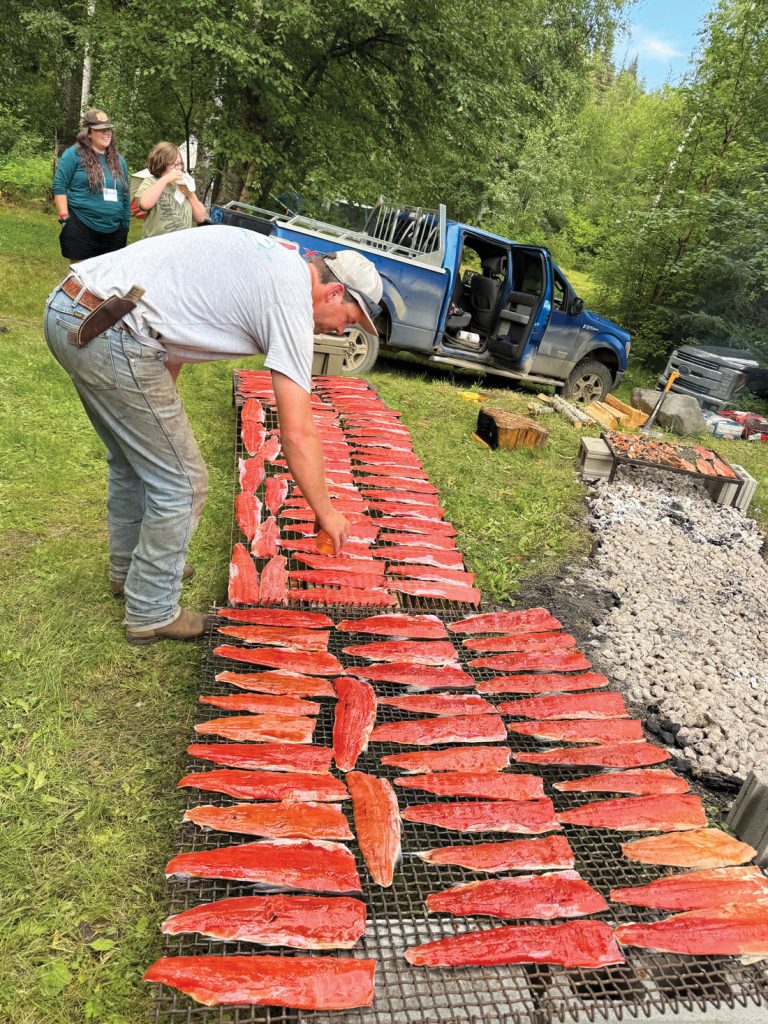
“We gather to celebrate the solutions, alliances, and collective hope that fuel these fights. We have already witnessed victories: communities have resisted extractive industries that threaten ecosystems and lives. We have stood together to stop the Enbridge pipeline and to protect the Sacred Headwaters from fracked methane. We have seen the Lax Kw’alaams Nation halt the proposed LNG export facility at Lelu Island.” —http://peaceandunitysummit.com
Photos and editorial help from Sidney Coles.

